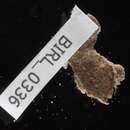en
names in breadcrumbs


Didemnum is a genus of colonial tunicates in the family Didemnidae. It is the most speciose genus in the didemnid family.[1][2] Species in this genus often have small calcareous spicules embedded in the tunic and form irregular or lobed colonies. Some Didemnum species, including Didemnum vexillum and Didemnum perlucidem are considered invasive species.[3] In early 2006, Didemnum vexillum was found covering a 230 km2 area of cobble habitat in Georges Bank off the coast of New England,[4] and is classified as an invasive species of greatest concern in coastal areas throughout Europe,[5] New Zealand, and North America.[3] Didemnum sp. invasions have also been recorded in Canada, the Mediterranean, and the Netherlands.[6]
Species in this genus can be found in tropical or temperate regions. Some tropical species such as Didemnum molle have photosynthetic algae in their tunics.[7]
The following species are recognised in the genus Didemnum:[8]
Didemnum is a genus of colonial tunicates in the family Didemnidae. It is the most speciose genus in the didemnid family. Species in this genus often have small calcareous spicules embedded in the tunic and form irregular or lobed colonies. Some Didemnum species, including Didemnum vexillum and Didemnum perlucidem are considered invasive species. In early 2006, Didemnum vexillum was found covering a 230 km2 area of cobble habitat in Georges Bank off the coast of New England, and is classified as an invasive species of greatest concern in coastal areas throughout Europe, New Zealand, and North America. Didemnum sp. invasions have also been recorded in Canada, the Mediterranean, and the Netherlands.
Species in this genus can be found in tropical or temperate regions. Some tropical species such as Didemnum molle have photosynthetic algae in their tunics.